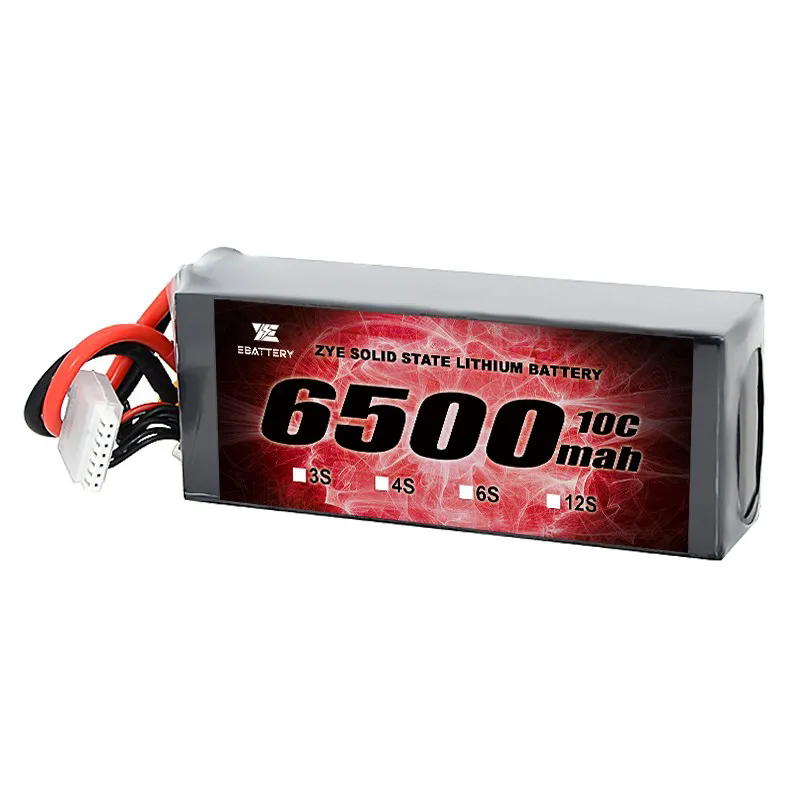What Are Semi-Solid State Batteries and Why Are They the Future of Energy Storage?
2024-11-18
As the world shifts towards more sustainable and efficient energy solutions, the search for advanced battery technology has never been more crucial. Traditional lithium-ion batteries have served us well in powering everything from smartphones to electric vehicles, but their limitations—such as energy density, safety concerns, and charging times—have spurred the development of next-generation technologies. One of the most promising contenders in the race for the future of energy storage is the semi-solid state battery. But what exactly is a semi-solid state battery, and why is it being hailed as the future of energy storage?
In this blog post, we'll explore the key features of semi-solid state batteries, their potential advantages, and how they could revolutionize industries ranging from electronics to electric vehicles and beyond.
What Is a Semi-Solid State Battery?
A semi-solid state battery is an advanced type of rechargeable battery that combines elements of both solid-state and traditional liquid electrolyte batteries. While solid-state batteries use a solid electrolyte to conduct ions between the cathode and anode, semi-solid state batteries use a gel-like or semi-solid electrolyte that enhances both performance and safety.
The semi-solid electrolyte is typically made from a combination of solid materials and liquid components, creating a hybrid structure that provides the benefits of solid-state technology—such as improved safety and energy density—while still maintaining the flexibility and scalability of traditional liquid batteries. This innovative design allows for a more stable and efficient energy storage solution.
How Do Semi-Solid State Batteries Work?
The basic function of a semi-solid state battery is similar to that of other batteries. During discharge, the battery releases energy by allowing ions to move from the anode to the cathode through the electrolyte. In a semi-solid state battery, this movement of ions takes place in a semi-solid, gel-like electrolyte, which serves as a medium for ion conduction.
- Anode and Cathode: The battery’s electrodes (anode and cathode) are responsible for storing and releasing energy. Common materials used for the anode include lithium or sodium, while the cathode may be composed of materials like cobalt oxide or iron phosphate.
- Electrolyte: The semi-solid electrolyte is the key differentiator in semi-solid state batteries. This material allows ions to move more efficiently between the anode and cathode while also enhancing the battery’s safety by reducing the risk of leaks or thermal runaway, a common issue with traditional liquid electrolytes.
- Energy Storage: During charging, the battery stores energy as lithium ions move from the cathode to the anode. When discharged, the ions return to the cathode, releasing energy to power devices or vehicles.
Advantages of Semi-Solid State Batteries
1. Enhanced Safety
One of the biggest advantages of semi-solid state batteries over traditional lithium-ion batteries is their improved safety. In liquid electrolyte batteries, the liquid is flammable and can lead to dangerous situations like thermal runaway or battery fires. Semi-solid state batteries, however, use a gel-like electrolyte that is much less flammable and reduces the risk of combustion. This makes them ideal for applications where safety is a top priority, such as in electric vehicles and large-scale energy storage systems.
2. Higher Energy Density
Semi-solid state batteries have the potential to offer higher energy density than traditional liquid batteries. The solid-state nature of the anode and cathode, combined with the semi-solid electrolyte, allows for more efficient energy storage. This means that semi-solid state batteries could store more energy in the same amount of space, making them ideal for electric vehicles and other portable applications that require long-lasting power.
3. Faster Charging Times
Charging times are a significant consideration for any energy storage system. Semi-solid state batteries could potentially charge faster than their liquid counterparts due to their improved ion conductivity and faster electron flow. This could drastically reduce the amount of time it takes to recharge electric vehicles and other devices, contributing to a more convenient user experience.
4. Longer Lifespan
The use of a semi-solid electrolyte reduces wear and tear on the internal components of the battery. This could lead to a longer lifespan for semi-solid state batteries, reducing the frequency of battery replacements and ultimately lowering maintenance costs over time.
5. Better Performance in Extreme Conditions
Extreme temperatures—both high and low—can significantly impact the performance of traditional lithium-ion batteries. Semi-solid state batteries, on the other hand, are more resistant to temperature fluctuations and can perform better in harsh environments. This makes them a promising option for applications in industries such as aerospace, automotive, and renewable energy, where reliable performance in a variety of conditions is crucial.
Applications of Semi-Solid State Batteries
The potential applications of semi-solid state batteries are vast, ranging from consumer electronics to large-scale industrial uses. Some notable applications include:
- Electric Vehicles (EVs): As the world moves towards greener transportation options, electric vehicles are in high demand. Semi-solid state batteries could provide EVs with longer driving ranges, faster charging times, and enhanced safety, making them a perfect fit for the future of transportation.
- Renewable Energy Storage: With the growth of solar and wind energy, there is an increasing need for efficient and reliable energy storage systems. Semi-solid state batteries could be used to store energy generated from renewable sources, ensuring that this power can be used when it is needed most, even during periods of low generation.
- Consumer Electronics: From smartphones to laptops, the demand for longer-lasting and faster-charging batteries is ever-increasing. Semi-solid state batteries could provide consumers with the high-performance batteries they need, with the added benefit of increased safety and longevity.
- Aerospace and Defense: In industries where reliability and performance are critical, such as aerospace and defense, semi-solid state batteries offer enhanced safety and the ability to withstand extreme environmental conditions, making them an ideal energy storage solution.
Challenges and the Road Ahead
While semi-solid state batteries offer significant advantages, there are still challenges to overcome before they can become mainstream. These include:
- Cost: The production of semi-solid state batteries is still relatively expensive compared to traditional lithium-ion batteries. As research and development continue, the cost of production may decrease, but for now, semi-solid state batteries are not yet cost-competitive for mass-market applications.
- Manufacturing Scale: Scaling up production to meet the demand for semi-solid state batteries remains a significant hurdle. Developing efficient manufacturing processes and overcoming technical challenges will be crucial to the widespread adoption of this technology.
- Material Limitations: While the semi-solid electrolyte provides several advantages, its development and material choices are still being researched. Finding the right balance of materials that optimize performance, cost, and safety is an ongoing challenge.
Conclusion
Semi-solid state batteries represent a significant step forward in energy storage technology, offering improved safety, higher energy density, faster charging times, and longer lifespans compared to traditional batteries. While challenges remain, the potential benefits of these batteries make them a promising solution for industries ranging from electric vehicles to renewable energy storage. As research progresses and manufacturing techniques improve, we can expect semi-solid state batteries to play a major role in powering the future of technology and transportation.
Do you think semi-solid state batteries will transform the future of energy storage? Let us know your thoughts in the comments!



